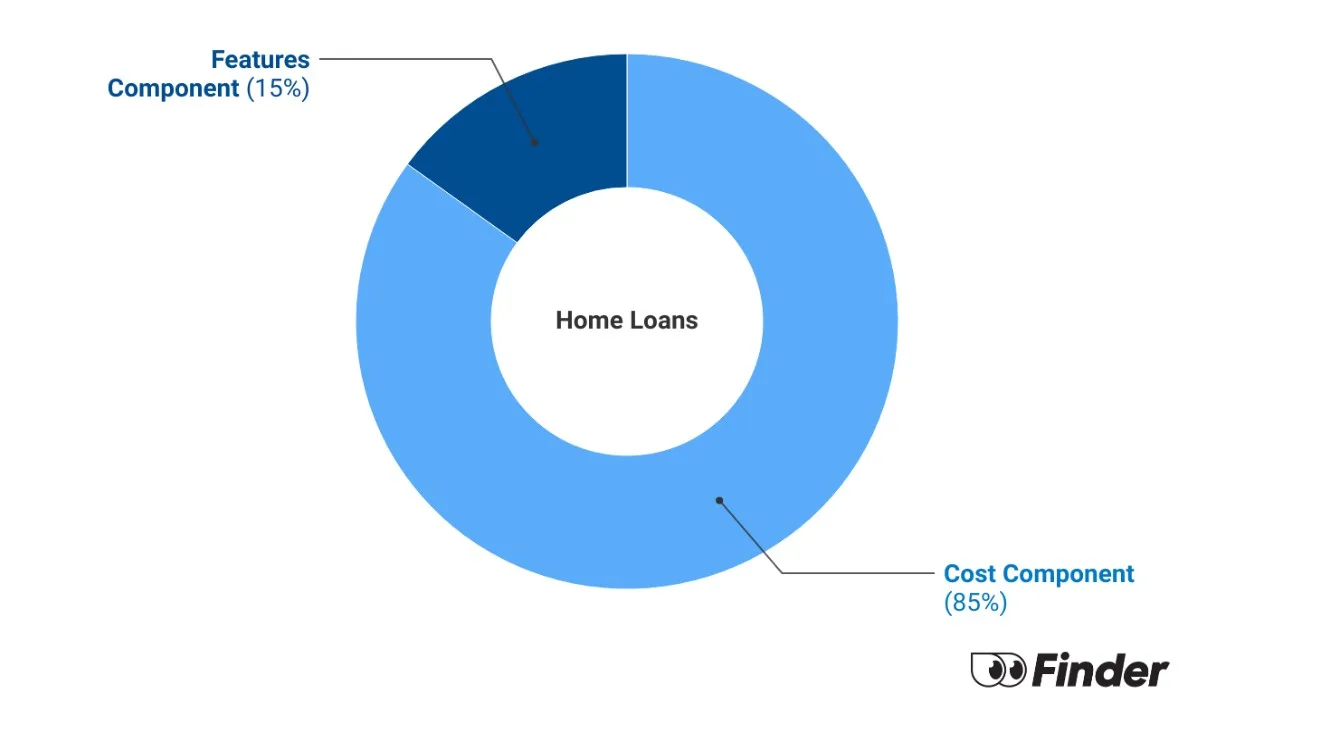- Ultimately, you want your investment to be profitable. But losses can happen. If your losses are tax deductible you can minimise a short-term loss through a smaller tax bill. This is called negative gearing.
Compare other products
We currently don't have that product, but here are others to consider:
How we picked theseKey takeaways
- Interest-only loans are where you only pay the interest charges on your loan and not the loan principal.
- Although it means you pay more over the life of the loan there are tax incentives for investors.
- Some investors use interest-only loans as an investment strategy, in the hope that property values will increase and override the cost.
What is an interest-only investment loan?
Investors can use investment loans to borrow money to purchase investment properties. Like other mortgages, the typical structure of a loan requires the borrower to pay back the money (the principal) plus interest charges at the same time. These are principal-and-interest loans.
But interest-only loans allow borrowers to delay repaying the principal for a set period. This results in lower repayments upfront but higher repayments later.
What are the benefits of interest-only investment loans?
Interest-only mortgages are popular with Australian property investors despite being more expensive than principal-and-interest loans. Used correctly, these loans let property investors maximise their tax-deductible interest costs or take a temporary break from making full repayments in an emergency.
Some ambitious investors even use these loans to hold investments cheaply for a few years and then flip them for a fast profit.
1. Interest payments are tax-deductible
2. You can cut your short-term costs
- Principal-and-interest repayments = $3,633 a month
- Interest-only repayments = $3,045 a month
3. Chasing a high-growth investment strategy
1. Higher interest rates.
2. You won't reduce your debt during the interest-only period.
3. You pay more interest.
-
-
-
Australian property investors have a tax advantage that home buyers don't: Interest on an investment home loan is tax deductible.
At the end of the financial year, you can deduct all of the interest you've paid on your investment property (along with a number of other tax-deductible property expenses) over the past 12 months.
Even if you're paying principal and interest as an investor, you can claim the back the interest portion of your repayments.
Interest-only repayments are not a long-term solution.
But switching to an interest-only loan can be a lifesaver when you're short on cash. For example, if you've lost your job or your property is under repair and has no tenants paying you rent.
Let's look at a loan where you've borrowed $600,000 over 30 years with a rate of 6.09%.
It will cost you more over the life of the loan, but switching to interest-only repayments would save you $588 a month. In an emergency, that's pretty helpful.
This is a riskier interest-only strategy. Let's say you buy an investment property in a booming market.
Your goal is to hold the property for just a few years, watch it (hopefully) grow in value, minimise your costs in the short term and then sell for a profit.
This is where you want an interest-only investment loan. You don't care about paying the loan off. You want to surf the wave of rising prices and jump off quickly. It's high-risk, high reward.
Example: high-growth investing with an interest-only mortgage
Let's assume you bought a $700,000 investment property in a booming market. You had a 20% deposit, or $140,000. Your loan principal is $560,000.
Assuming a 30-year loan and an interest rate of 6.09%, your monthly repayments on an interest-only loan would be $2,842.
Now let's assume the investment grows in value at 7% per year* for 4 years. You can sell the property for $917,000.
And in those 4 years, you haven't paid off the loan at all. You've paid $136,416 in interest. Accounting for the original value and the interest paid, you'd come out just over $80,000 ahead. But that's a hypothetical value growth and in reality it could grow at a much smaller rate or even decline.
*There are many assumptions in this hypothetical example. Future growth is never guaranteed and this simplified example doesn't include your selling costs, stamp duty, capital gains tax or rental income.
Need expert help? Contact a mortgage broker
What are the risks of interest-only loans?
It's a good idea to consider the risk or negatives when making any financial decision. Then you're able to balance out the pros with the cons to make the right decision for you.
Lenders charge higher rates for interest-only loans, and even higher rates when these are also investment loans. The lowest rates on the market are always principal-and-interest loans. When your loan reverts to a principal-and-interest loan, make sure you get a lower rate too.
The average variable interest rate with principal-and-interest repayments in December 2024 is 6.98%.
The average variable interest rate with interest-only repayments is 7.22%.
This is a difference of 24 basis points.
At the end of the interest-only period, you'll still owe the same amount you borrowed. For instance, if you borrow $500,000 on an interest-only loan, 2 years later, you'll still owe $500,000 on that loan. And if your property doesn't grow in value, you won't have built much equity in your home because your debt hasn't changed.
By avoiding paying off the loan principal during the interest-only period you just end up paying more interest in the long run. You still have to pay off the loan. But by delaying the full repayments your lender gets an opportunity to charge you more interest (at a higher rate too).
Here's a quick example using 2 home loans that are identical except for the repayments.
Both loans are for $600,000 over 30 year loan terms with interest rates of 6%.
| Principal and interest | Interest-only | |
|---|---|---|
| Interest only period | NA | 2 years |
| Monthly repayments | $3,598 | $3,000 during IO period $3,691 after IO period |
| Total loan cost over 30 years | $1,295,030 | $1,312,091 |
| Difference in cost | $17,061 cheaper | $17,061 more expensive |
In this example, the interest-only loan would end up costing $17,061 more in interest. That is, unless you refinance down the road or make additional repayments to pay the loan back earlier.

"Interest-only investment loans are often a great tool for investors, but it doesn't always work out better than simply repaying the loan sooner.
If you can also make repayments towards the principal loan amount (even if they're sporadic) then you can go some way to minimising the overall cost of the loan.
The best thing to do is speak to a mortgage broker or financial adviser if you're trying to get the best return for your investment."
How do I compare interest-only investment loans?
When comparing interest-only mortgages for investment, you need to consider these factors:

Interest rate
A lower rate means lower repayments. It's one of the fastest ways to compare mortgages. If 2 loans are equal in all other respects (fees, features, eligibility criteria), the one with the lowest rate is better for you.

Loan features
Having an offset account lets you use additional savings to reduce your interest payments even further.
Investors can really take advantage of offset accounts by building up savings and reducing their loans while still maximising their tax-deductible expenses.

Flexibility
A loan with low fees (especially discharge and switching fees) makes it easier to refinance your mortgage when the interest-only period ends. And why pay more in fees when you can avoid it?
Use a repayment calculator
Use a loan repayment calculator to find out what your repayments will be if you choose an interest-only home loan. Then run the same calculations for principal-and-interest repayments, so you can see what your repayments will be once the interest-only period ends.
Your home loan details
Overview of your loan
| Years remaining | Principal remaining |
|---|
Frequently asked questions about interest only investment loans
What is Finder Score?
The Finder Score crunches 7,000 home loans across 120+ lenders. It takes into account the product's interest rate, fees and features, as well as the type of loan eg investor, variable, fixed rate - this gives you a simple score out of 10.
To provide a Score, we compare like-for-like loans. So if you're comparing the best home loans for cashback, you can see how each home loan stacks up against other home loans with the same borrower type, rate type and repayment type. We also take into consideration the amount of cashback offered when calculating the Score so you can tell if it's really worth it.
Sources
Ask a question
2 Responses
More guides on Finder
-
Why you need to know when your interest-only period ends
If you aren’t paying attention to when your interest-only period ends, you could find yourself facing higher repayments or a shorter loan term.


Hi
Can I convert my current home loan (owner occupied) to an investment Interest repayment only?
What are the procedures?
Thanks
Hi,
Yes, if you are now using your property as an investment property you will need to switch your loan to an investment loan. Talk to your lender about whether they can switch you over, or take a look at other lenders you could refinance your loan to.
Thanks,
Rebecca